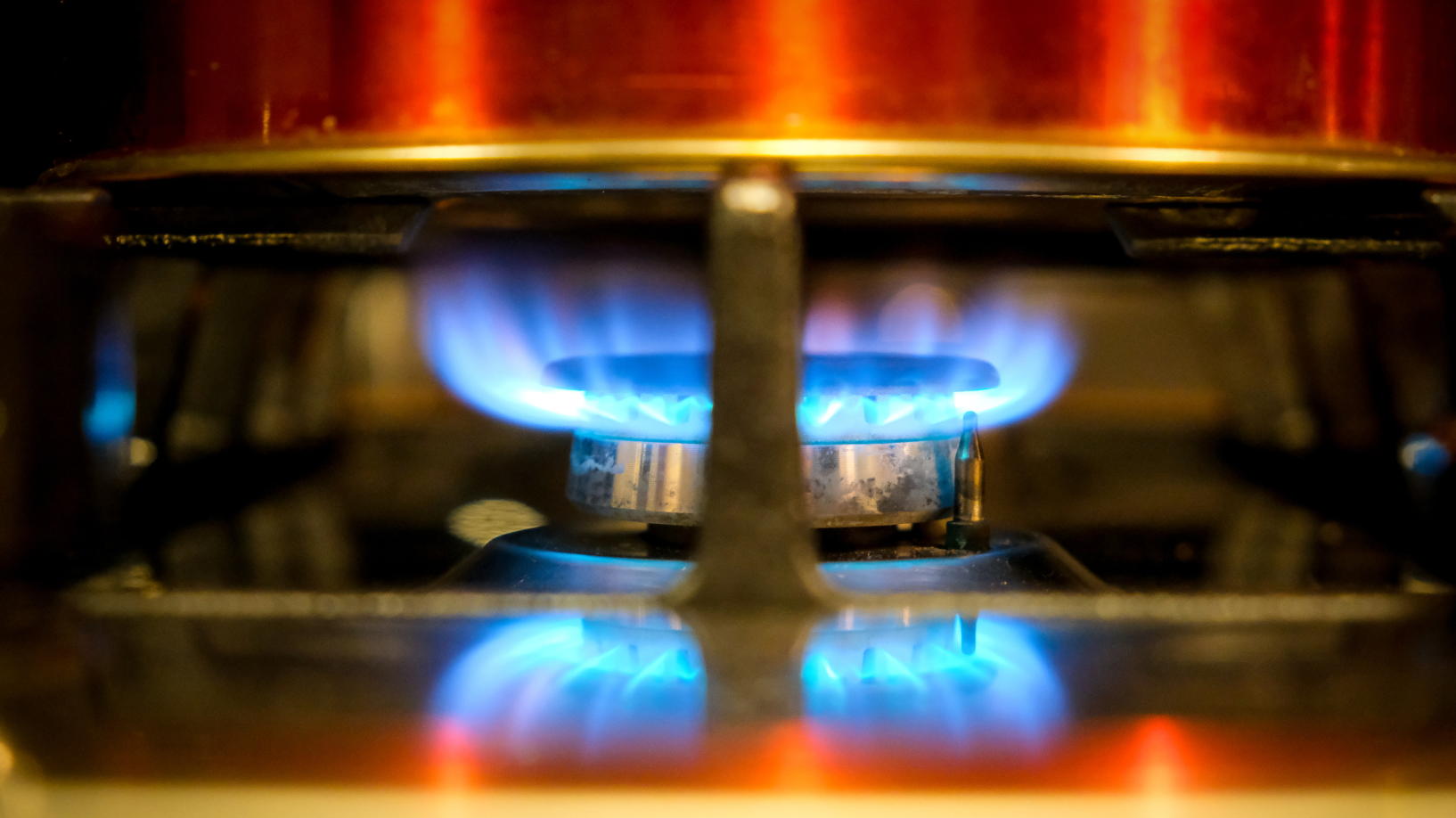The rules governing gas distribution networks are no longer fit for purpose, given the risks to consumers from a declining gas network.
Australian residential and small commercial gas use is expected to decline 72% by 2043 and be largely non-existent by 2050. This transition will bring with it countless benefits, as consumers who go "all-electric" will experience lower running costs.
The gas distribution network companies responsible for transporting gas to our homes and businesses have already acknowledged that their customer numbers will decline. But we need to plan for this declining network to ensure everyone benefits from the transition.
That's why we've lodged four rule change proposals for the Australian Energy Market Commission (AEMC) to amend the National Gas Rules and improve the regulation of gas networks in decline.
What's the risk to consumers?
- As consumers electrify and leave the network, the costs of the network will be shared by a diminishing cohort. This means consumers who are left using gas (likely those who face barriers to electrification, such as renters and low-income households), will face higher gas bills.
- We commissioned research in 2024 that found the regulatory asset base (RAB) of the NSW Jemena gas network would still be $2.3 billion by 2055, leading to a high risk of asset stranding. We need to plan for this future to ensure consumers pay an affordable price for gas as long as they need it, and aren't left paying an unfair share of gas networks that are no longer needed.
Our proposed rule changes
- Requiring new customers to pay the upfront costs of connection
- Gas networks in transition
- Requiring gas networks to plan, and provide greater information on, the future of their networks
- Making the use of accelerated depreciation contingent on broader consumer protections
- Introducing new criteria to avoid unnecessary capital spending
Here you'll find more information about each of the rule changes, why they're needed, and how you can take part in the consultation process.
1. Requiring customers to pay the upfront costs of connection
The Australian Energy Market Commission (AEMC) has finalised a change to the National Gas Rules to make them fit-for-purpose as consumers electrify and leave the gas network. This change, proposed by us, requires new gas customers to pay the full, cost-reflective price of connecting to the network for the first time.
This rule change gives consumers clearer information about the real cost of joining the gas network and supports more informed choices between gas and electric technologies. It also limits network costs that would otherwise fall on households and small business who are already on the gas network.
Limit rising gas bills: In NSW's Jemena Gas Network alone, the Australian Energy Regulator has recently approved more than $330 million for new gas connections over the next five years. This rule change will ensure that, in the future, these costs are removed and existing customers are not left paying for them.
Encouraging electrification: There is overwhelming evidence that all-electric buildings are cheaper to run. But allowing gas connections at no cost means many may not consider these benefits when building new homes. Requiring upfront connection costs will enable consumers to weigh up the true costs of connecting to the gas network.
2. Gas networks in transition
Consultation: CLOSED 🔴 register for updates
The following three proposed rule changes have been consolidated under the banner of Gas Networks in Transition. Visit the AEMC's website for more information and to register for updates.
2a. Requiring gas networks to plan for the future
Currently, gas distribution networks provide very limited public information, particularly in comparison to electricity networks. Unlike electricity networks, they have no formal planning requirement.
Without more and better information, it is hard for governments, electricity networks, consumer advocates and other stakeholders to determine precisely what is happening, or what might happen next, on the gas network.
Poor planning leads to poor decisions, increasing costs for consumers.
We've proposed introducing a new “gas annual planning report” (GAPR) that provides a multi-year forecast of each gas distribution network, keeping stakeholders up to date with the electrification process and providing the latest view on how fast demand for gas is falling.
The GAPR should also include details of planned replacement or augmentation projects that could be avoided by strategic decommissioning, demand management or other non-pipeline alternatives.
- Decreased costs to consumers, as all stakeholders can plan how to efficiently wind down the network.
- Greater warning to consumers about when gas infrastructure in their area is likely to end, enabling more informed choices when purchasing new appliances.
2b. Making accelerated depreciation contingent on greater consumer protection
The Australian Energy Regulator (AER) has approved gas networks using accelerated depreciation to reduce the risk of stranded assets. This involves consumers paying more now, to avoid future costs (i.e. losses) being incurred by network investors later.
It is a transfer of risk from networks, to consumers. Our commissioned analysis finds accelerated depreciation does not materially reduce the risk of stranded assets.
We propose contingent accelerated depreciation, by amending Rule 89, which sets out the criteria under which it is allowed.
Certain conditions that provide additional protection for consumers would have to be met, before accelerated depreciation is allowed. These would help reduce the cost of stranded assets. These conditions include:
- Policies ensuring consumers don’t pay costs of new gas connections
- Policies ensuring sufficient funding for disconnections from the gas network
- Consumers would not be left paying an unfair share of stranded assets.
- Network costs would be constrained or even reduced by minimising further spending.
2c. Introducing new criteria to avoid unnecessary capital spending
Due to the risk of stranded assets from declining demand for gas, it is essential to minimise new capital spending (capex) on the gas distribution network. The problem is, gas networks continue to make requests for large capital expenditure spending.
All potential capex should be considered through the lens of declining demand and the implications for recovering costs. But this isn't happening yet.
We've proposed amending Rule 79, which sets out the criteria for approving capex. This would include several amendments, including:
- Removing any presumption of investing for growth
- Consideration for other non-network alternatives, such as strategic decommissioning
This would place greater rigour on capex proposals and reduce information asymmetry for stakeholders seeking to engage in these consultations.
Consumers would benefit from lower network costs, by ensuring no unnecessary spending is added.
FAQs
Anyone, including consumers, governments and industry participants, can request a change to the National Energy Rules, which the Australian Energy Market Commission (AEMC) makes and amends under the National Energy Laws:
These rules and the amendments:
- affect how market participants can operate in the competitive generation and retail sectors
- provide specific protections for consumers to whom energy is sold and supplied
- govern the economic regulation of electricity transmission and distribution services and gas pipelines
Find out more about the rule change process and see the current rule changes at the AEMC's website.
Research shows Australian consumers are using less and less gas.
CSIRO projects that gas use in the residential and commercial sectors approaches zero by 2050 in all scenarios. Our surveys find consumers are increasingly considering electrifying, particularly for people in states with clear policies on electrification. Even gas distribution networks themselves acknowledge there will be very few customers on their networks in the coming decades.
As consumers electrify and leave the network, gas distribution network assets (valued at as much as $11.2 billion), will become stranded. As more people electrify their homes and businesses, the cost to maintain these assets, primarily pipelines, will be shared by a shrinking pool of consumers, with network prices on household gas bills set to skyrocket to as much as $1,170 in 2050.
The rules governing gas distribution networks are no longer fit for purpose, given the risks to consumers from a declining gas network. Our proposed rule changes are crucial to ensure consumers are adequately protected in the transition from gas.
Accelerated depreciation is the practice whereby the Australian Energy Regulator has allowed gas distribution networks to require consumers today to pay more for the gas distribution network, to reduce the costs network investors might face later.
Strategic decommissioning, or "pruning", of the gas network, refers to the planned removal of gas supplied through pipelines.
The strategic component refers to the manner in which this is done, such as by starting with some areas before others, and the manner in which it's done, i.e. a phased process rather than all at once.
How to get involved
There are several ways you can engage in this process:
- Make a submission: Visit the AEMC's website to review all the rule changes and register for updates.
- Spread the news: If you believe there are interested parties in your network, we’d love you to share this link and resources to encourage further engagement.
- Get in touch: If you have further questions about our rule change proposal, reach out to our team.



